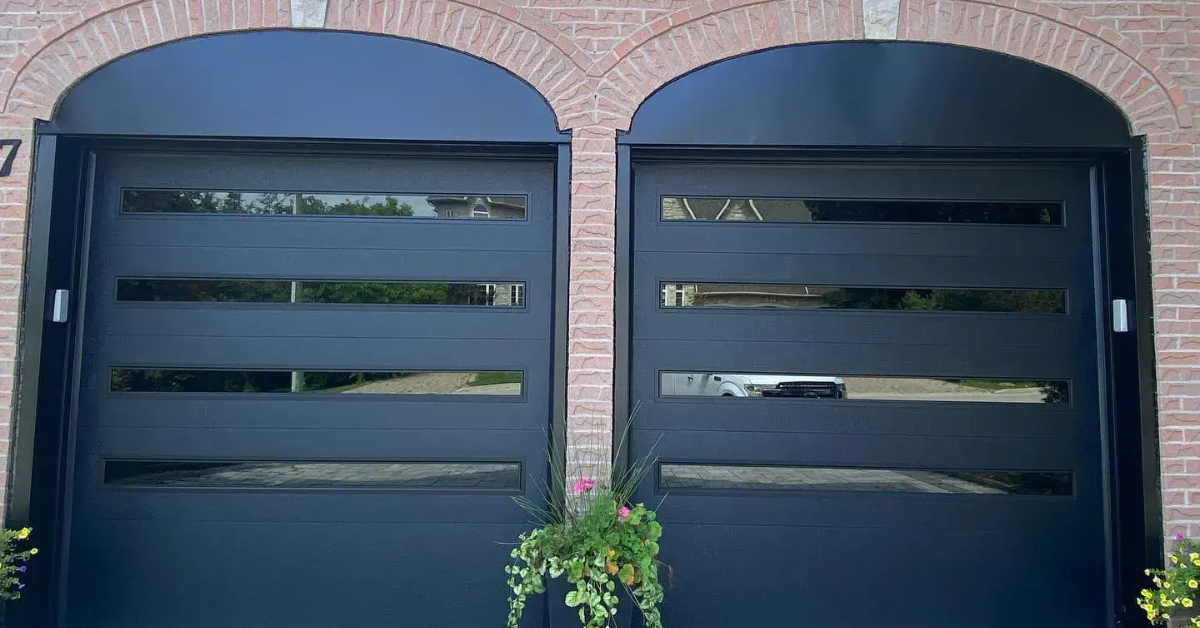Garage Door Hinge Replacement: A Guide to Restoring Function and Safety
Your garage door is one of the most used components of your home’s exterior. Day in and day out it endures stress, weather, dust, and mechanical wear. One often-overlooked part that plays a critical role in its smooth operation is the Garage Door Hinge Replacement. When the hinge fails, the door may sag, bind, make noise, or become unsafe to operate. In this article, we explore what garage door hinge replacement involves, why it’s necessary, how to choose the right parts, and how to carry out or oversee a proper replacement.
Why Garage Door Hinge Replacement Matters
Garage door hinges connect the panels of your sectional door, allowing them to flex and follow the curvature of the track as the door opens and closes. Over time, hinges undergo repeated stress cycles. Corrosion, metal fatigue, fatigue cracks, loose hardware, or impact damage can cause them to fail or deform. When a hinge is compromised, consequences may include:
-
Panels misaligning, sagging, or coming out of parallel
-
Noisy, jerky, or grinding door motion
-
Increased stress on rollers, tracks, and opener mechanisms
-
Even safety risks if a hinge gives way while the door is in motion
Thus, replacing worn or damaged hinges proactively is essential not only for operational smoothness but also for safety and the longevity of the entire door system.
Types of Garage Door Hinges & Their Roles
Before embarking on a replacement project, it helps to understand the types of hinges used in sectional garage doors:
-
Standard (Middle) Hinges: These connect the edges of adjacent panels, allowing them to pivot relative to each other as the door moves on a curved track.
-
Top or End Hinges: Installed at the ends of panels, especially the top or bottom edges, often used where a roller is mounted or where the panel meets weatherstripping or a header.
-
Bottom Bracket / Hinge Assemblies: At the bottom panel, hinges are sometimes integrated with roller brackets or anchor brackets that tie to the cable and spring system.
Each hinge bears different loads and geometry, so it is vital to replace with the correct hinge type, dimension, and material.
Assessing & Diagnosing Hinge Problems
As you evaluate whether hinge replacement is necessary, watch for signs such as:
-
Visible cracks, bends, or deformation in hinge plates
-
Loosened or missing hinge screws or bolts
-
Rusted or corroded ends that impede motion
-
Uneven spacing between panels
-
Unusual sounds during operation—squeaks, grinding, popping
-
Difficulty or resistance when opening or closing
In some cases, the hinge may still look intact but be fatigued internally or have loosened pin connections. Early detection helps prevent more extensive damage or collapse.
Choosing the Right Replacement Hinges
Not all hinges are created equal. When selecting replacement parts, consider:
-
Material & Finish: Galvanized steel, stainless steel, or zinc-coated finishes help resist rust and corrosion.
-
Thickness & Strength: Hinges must be strong enough to handle repeated cycles and load; thin or flimsy replacements may fail prematurely.
-
Hole Spacing & Alignment: The mounting holes must match existing panel holes (or be close enough to drill new ones without compromising panel integrity).
-
Pin Diameter & Fit: The pivot pin diameter and tolerance should match the existing roller shaft and hinge configuration.
-
Brand / OEM compatibility: Where possible, use replacement hinges recommended by the garage door manufacturer (or matching specifications) to maintain fitting and geometry.
-
Reinforced or Heavy-Duty Options: For heavier or insulated doors, reinforced hinges with gussets or added thickness may offer longer life.
Always purchase a full hinge set (not just a few) to maintain uniform wear and appearance, even if only a few seem worn.
Tools & Materials Needed
To carry out a hinge replacement (or supervise a technician), you or the technician will typically need:
-
Replacement hinge set (including all necessary bolts, pins, washers)
-
Socket or wrench set (metric or standard depending on hardware)
-
Drill & appropriate bits (in case you need to re-drill or enlarge mounting holes)
-
Locking pliers or vise grips
-
Screwdrivers
-
Safety equipment: gloves, eye protection
-
C-clamps or locking pliers to secure panels
-
Lubricant (garage door–safe, e.g., silicone or lithium grease)
-
Level and tape measure
-
Ladder or appropriate staging
Safety precaution: disengage or partially slack the torsion or extension spring system (or lock the door in place) so the panels and springs cannot move unexpectedly while hinges are removed and installed.
Step-by-Step: Replacing Garage Door Hinges
Below is a general workflow. Specific designs and panels may require adjustments, so always refer to manufacturer instructions when available.
-
Secure the Door
Close the door and use locking pliers or clamps on the tracks just above the bottom roller to prevent movement. If possible, disconnect the opener for manual control. -
Relieve Spring Tension (if needed)
In cases where working near cables, bottom brackets, or spring attachments, follow proper procedures to release spring tension safely (this may require professional handling). -
Remove Old Hinge Hardware
Loosen and remove bolts/screws holding the old hinge. Support the panel to prevent sagging or tipping while hinge hardware is removed, especially for middle or bracket hinges on large panels. -
Clean & Inspect Panel Edge / Surfaces
Clear rust, debris, and old paint around mounting holes. Check for cracks or damage to panel edges. If holes are elongated or misaligned, you may need to carefully re-drill or file for proper fit, avoiding weakening the panel. -
Align & Install New Hinge
Hold the new hinge flush with the panel edge and line up the mounting holes. Insert the bolts/screws hand-tight at first, then level and square the hinge before fully tightening. Do not overtighten, which may distort panel edges or hinge plates. -
Install Adjacent Hinges to Maintain Geometry
After replacing one hinge, move to other hinges in the same vicinity to ensure consistent alignment and tension among connected panels. -
Test Movement & Adjust
Slowly open and close manually to observe binding, alignment, or wobble. If any misalignment occurs, slightly loosen hinge bolts, adjust, then re-tighten. -
Lubricate Pivot Points & Rollers
Apply a garage-door-safe lubricant on hinge pins, pivot points, and adjacent rollers to restore smooth motion. -
Final Inspection & Safety Check
Verify all hardware is properly torqued, panels remain square, and motion is smooth. Re-engage the opener and test a few full cycles. Check for unusual noises or misalignment.
When to Call a Professional
Although many homeowners with mechanical aptitude can replace hinges, certain situations merit professional services:
-
Torsion or extension spring systems are under high tension and pose serious safety risks
-
Large or heavy insulated doors that require specialized handling
-
Panel damage or warping that complicates hinge alignment
-
If you lack the tools or confidence to work safely
-
When the door system is under warranty and self-modification could void it
A trained technician can ensure safe spring handling, proper geometry restoration, and warranty compliance.
Costs & Timeframe
The cost of hinge replacement depends on:
-
The number and type of hinges required
-
Whether OEM or aftermarket parts are used
-
Labor rates if hiring a professional
-
Any additional repairs (panel damage, misalignment corrections)
In many cases, the parts might cost in the tens to low hundreds (depending on door size and quality). For a typical two-car sectional door, hinge replacement (parts + labor) might fall in a modest budget range compared to full door replacement.
Timewise, replacing hinges on a single panel might take 30–60 minutes for an experienced person; replacing all hinges on a full door could take several hours (including cleanup, alignment, testing).
Benefits of Timely Replacement & Maintenance
-
Smoother operation: Reduced noise, binding, or jerkiness
-
Prolonged life: Less strain on rollers, tracks, cables, and the opener
-
Improved safety: Less risk of hinge failure under load
-
Aesthetic uniformity: All hinges match appearance and finish
-
Peace of mind: You avoid sudden door failures
Moreover, hinge replacement is much more cost-effective and less invasive than replacing full door sections or dealing with track or panel damage caused by hinge failure.
Tips & Best Practices
-
Replace hinges in sets rather than mixing old and new; uniform wear keeps things aligned
-
Use locking washers or locknuts to prevent hardware from loosening over time
-
Always ensure proper alignment before fully final tightening
-
Mark hinge parts when removing (e.g. “top,” “middle,” “bottom”) to avoid mixing parts
-
After a few cycles, re-check hardware torque, as settling may cause slight loosening
-
Keep spare hinges and hardware in your tool kit for quick future repair
Conclusion
Garage door hinge replacement is a crucial, yet often overlooked maintenance task. Properly installed hinges restore smooth motion, reduce wear on the door system, and enhance safety. Whether you opt to DIY or hire a technician, selecting the correct hinge type and ensuring precise installation is key. With timely attention and quality components, your garage door can continue operating reliably for many years.







